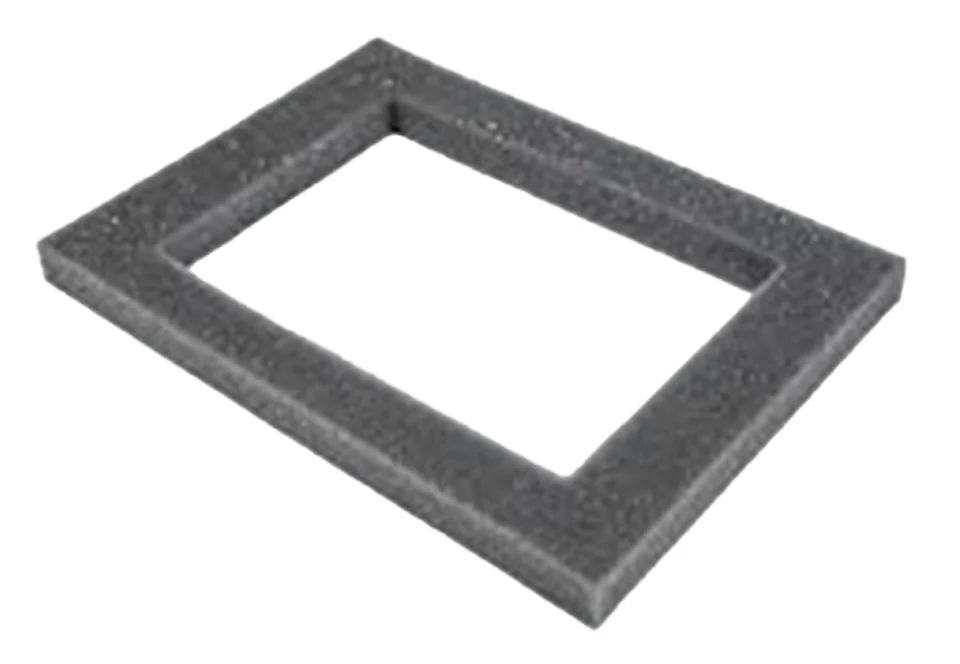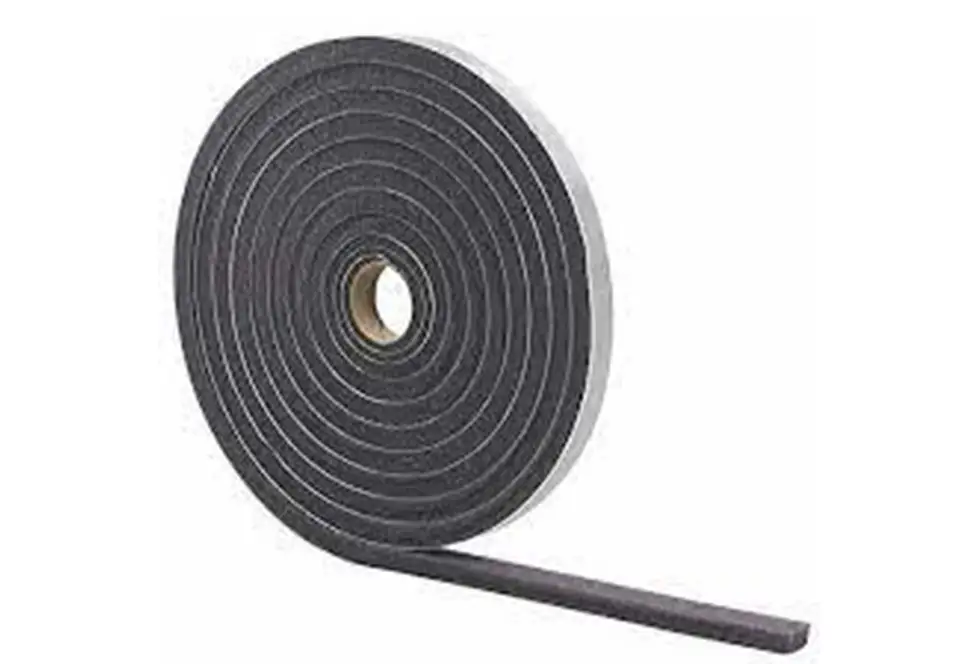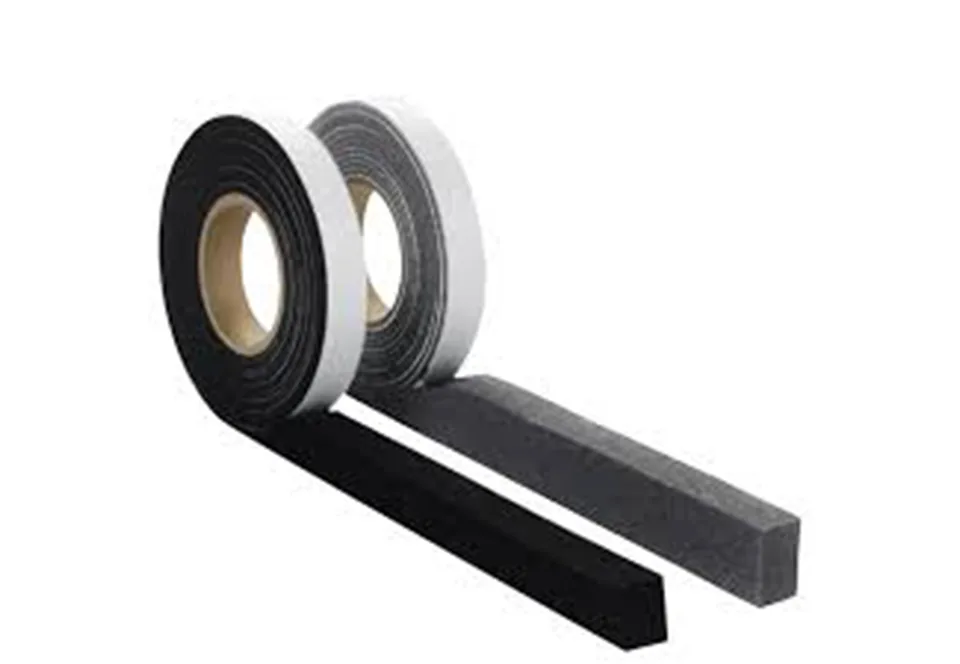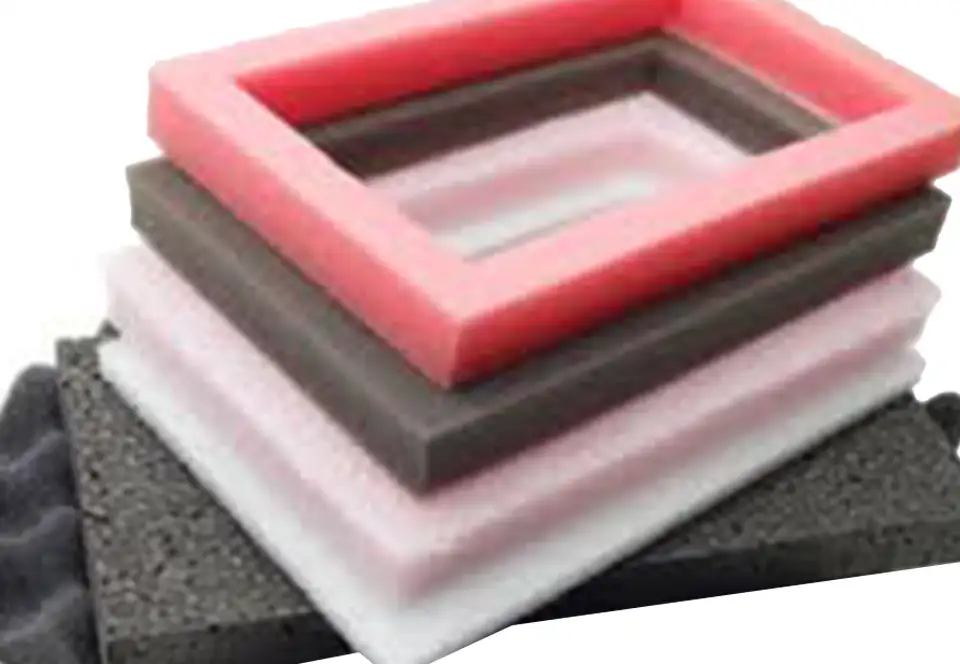PU Foam Gaskets
PU foam gaskets are made from polyurethane foam, which is a versatile material that can be customized to meet specific industrial requirements. PU foam gaskets are ideal for applications where a seal is required to prevent the escape of liquids or gases. They are commonly used in the automotive, electronics, and HVAC industries. PU foam gaskets are a versatile and reliable option for industrial applications where a seal is required. They can be customized to meet specific requirements and can withstand harsh conditions, making them ideal for use in a wide range of industries.




| Product Specification | ||
|---|---|---|
| Product Code | --- | |
| Density Available | 24, 28 & 32 Density | |
| Shape | Tape | |
| Application | Auto Mobiles And Electric | |
| Patern | Tape | |
| Sample Available | 1 | |
| Certification | Yes | |
| Main Demestic Market | All India | |
| Colour | Gray | |
| Grades | FR and NON FR | |
| Third Party Confirmation | YES | |
Product Description
PU foam gaskets are available in different densities and can be customized to fit specific shapes and sizes. They have good compressibility and recovery properties, making them ideal for sealing irregular surfaces. They also have good resistance to temperature, chemicals, and moisture.
PU foam gaskets can be easily die-cut, which allows for precise and consistent shapes to be produced. This makes them ideal for use in high-volume production processes. They can also be coated with adhesives or other materials to enhance their sealing properties.
In the automotive industry, PU foam gaskets are used in engine components, doors, windows, and other areas where a seal is required. In the electronics industry, they are used to seal enclosures, protect against EMI/RFI, and dampen vibration. In the HVAC industry, they are used to seal air ducts and prevent leaks.
PU Foam Gaskets Characteristics
PU foam gaskets are made from polyurethane foam, a material that offers a range of characteristics that make it an ideal choice for sealing applications.
Some of the key characteristics of PU foam gaskets include:
Compressibility: PU foam gaskets have good compressibility properties, allowing them to conform to irregular surfaces and maintain their shape over time. This makes them effective at creating a tight seal and preventing the escape of fluids or gases.
Recovery: PU foam gaskets have good recovery properties, meaning they can return to their original shape after being compressed. This ensures they maintain their effectiveness over time and can provide a reliable seal for extended periods.
Resistance: PU foam gaskets are resistant to temperature, chemicals, and moisture, making them suitable for use in harsh environments. They are able to withstand exposure to a range of substances without degrading or losing their effectiveness.
Customization: PU foam gaskets can be easily customized to meet specific requirements. They can be produced in different densities, thicknesses, and shapes, making them versatile and effective in a range of applications.
Die-cutting: PU foam gaskets can be easily die-cut to produce precise and consistent shapes. This makes them ideal for use in high-volume production processes where consistency and reliability are important.
Adhesion: PU foam gaskets can be coated with adhesives or other materials to enhance their sealing properties. This makes them even more effective at creating a tight seal and preventing the escape of fluids or gases.
Overall, PU foam gaskets offer a range of characteristics that make them an ideal choice for sealing applications. They are versatile, reliable, and can be customized to meet specific requirements, making them suitable for use in a wide range of industries.
PU Foam Gaskets Applications
PU foam gaskets have a wide range of applications in various industries due to their excellent sealing and insulation properties.
Here are some common applications:
Electronics: PU foam gaskets are widely used in electronics manufacturing to seal and protect electronic components from dust, moisture, and other environmental factors. They are also used to reduce electromagnetic interference (EMI) and improve the performance of electronic devices.
Automotive: PU foam gaskets are used in the automotive industry for sealing and insulating components such as doors, windows, and engine compartments. They help to reduce noise and vibration, and improve the overall energy efficiency of vehicles.
HVAC: PU foam gaskets are used in heating, ventilation, and air conditioning (HVAC) systems to seal ductwork and prevent air leaks. They help to improve energy efficiency and maintain indoor air quality.
Medical devices: PU foam gaskets are used in medical device manufacturing to seal and protect sensitive electronic components from moisture and other environmental factors. They are also used in medical implants to prevent the growth of bacteria and other harmful microorganisms.
Aerospace: PU foam gaskets are used in the aerospace industry for sealing and insulating components such as doors, windows, and engine compartments. They help to reduce noise and vibration, and improve the overall energy efficiency of aircraft.
Construction: PU foam gaskets are used in construction for sealing and insulating components such as windows, doors, and roofs. They help to reduce energy loss and improve the overall energy efficiency of buildings.
Overall, PU foam gaskets are used in a wide range of industries and applications due to their excellent sealing and insulation properties. They help to improve energy efficiency, protect sensitive components, and maintain overall product quality.
FAQ's
A gasket is a mechanical seal used to fill the space between two or more mating surfaces to prevent leakage and provide a barrier against the passage of gases or liquids. Gaskets come in various shapes and materials, depending on the application.
Gaskets are used in a wide range of applications, including plumbing, automotive engines, industrial machinery, and equipment with pressurized or fluid-carrying components. They play a critical role in sealing joints, preventing leaks, and maintaining the integrity of systems.
Gaskets can be made from various materials, including rubber, cork, paper, metal, and composite materials. The choice of material depends on the specific requirements of the sealing application, such as temperature, pressure, and the type of fluid or gas being sealed.
Selecting the right gasket involves considering factors like operating conditions, temperature, pressure, chemical compatibility, and the desired level of compression. It's essential to match the gasket material and design to the specific needs of the sealing application.
Proper installation involves ensuring that the gasket is positioned correctly and tightened to the manufacturer's specifications. Gaskets should be regularly inspected for wear, damage, or degradation, and replaced as needed to maintain the integrity of the seal.



